





Flowering shrubs provide a long-lived, low-fuss, eye-fetching framework in any garden design. And their rich array of form, foliage, fruit, and flowers can yield year-round rewards.
continue reading below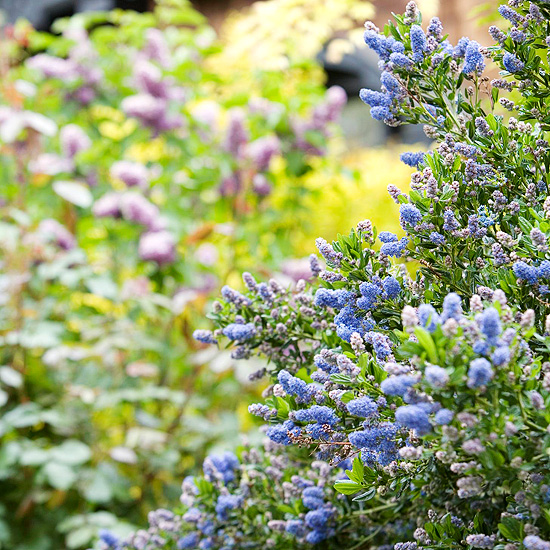
Lavishly lathered with blue flower trusses in spring, frost-tender wild lilacs (Ceanothus) are deceptively rugged. Their tough roots control erosion; their evergreen leaves are water-thrifty. In cold climes, plant deciduous, white-blossomed New Jersey tea.
See more of our favorite flowering shrubs.
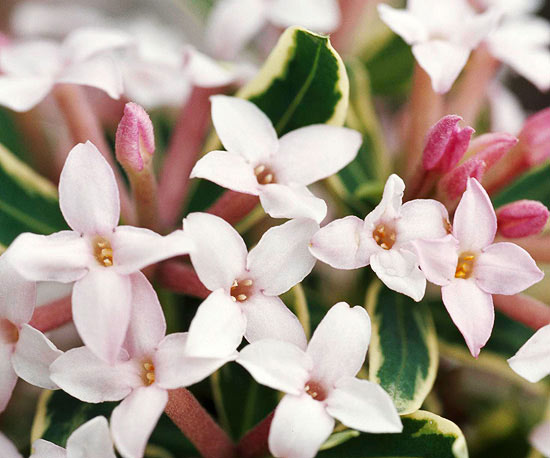
Nosegay clusters of Daphne odora bear a sweet scent of mingled rose and anise in early spring. Daphne, including the evergreen marginata with yellow-edged leaves, thrive in warm climes. Fragrant Viburnum carlesii is a fine cold-hardy alternative.
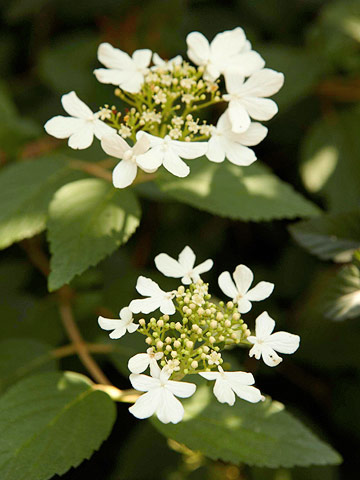
Doublefile viburnum grows in elegant, horizontal tiers decked with flat-topped flower clusters. Its spring scent, deep-green summer foliage, claret-colored fall leaves, and black fruit make Viburnum burkwoodii a year-round favorite.
Learn more about viburnums.
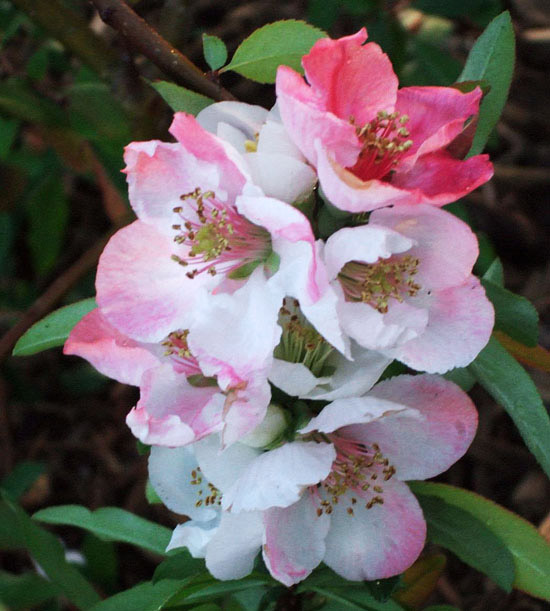
Spring-flowering branches brighten homespun pitchers. The rich pink blossoms of flowering quince are a colorful standout. This cold-hardy shrub is ideal grown in rows as a prickly-limbed security hedge.
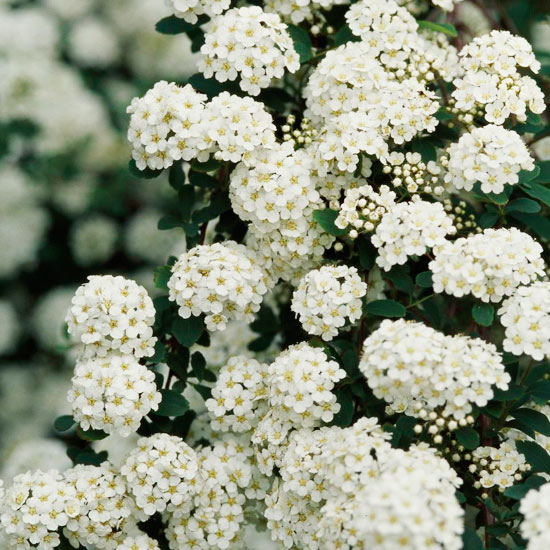
Lush-blooming spireas are rewarding additions to any sunny garden. Snowmound spirea blooms in spring and boasts a compact habit primed for tucking in among perennials in a mixed border.
Learn more about spirea.
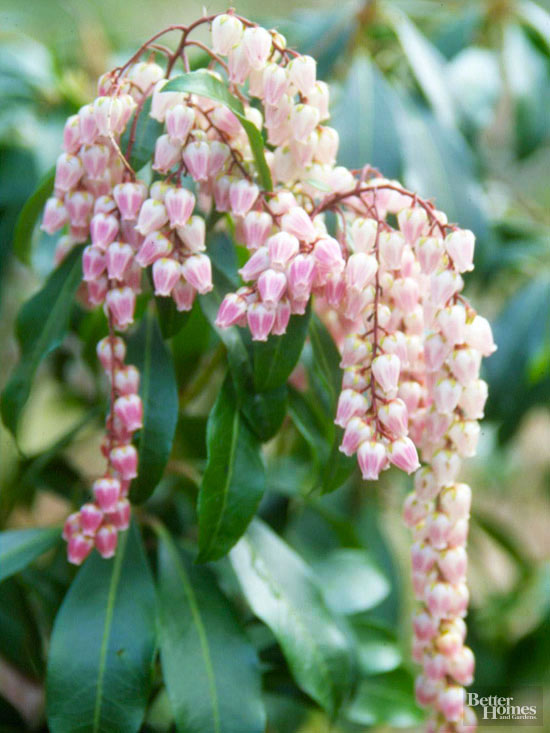
The glossy-leaved evergreen pieris, draped with frothy flower clusters, is well worth pampering. Ply it with acidic soil and ample water to help it reach its 7-foot potential. Plant it in protected niches in the North to shield early spring blossoms from late frost.
Learn more about andromeda.
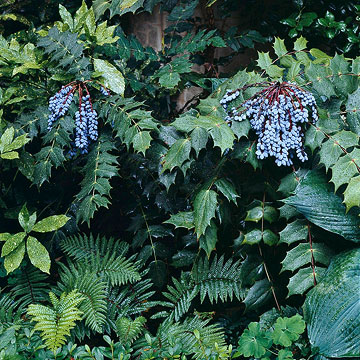
Holly-like leaves, brilliant yellow flower trusses, blue-black fruit, and bronzy winter color place Mahonia in the limelight each season. Since this native evergreen spreads (in moist soil) to form broad colonies, it's a great screen or foundation plant.
Learn more about grape holly.
Before purchasing blooming shrubs, determine what role you want them to play in your landscape. Do you need fall color or winter interest? Perhaps you need more abundant bloom for vases than your perennials can supply? Are you plotting a privacy hedge, hiding a foundation, softening a corner, or marking a pathway? Shrubs can meld wild and well-groomed spaces, direct traffic, filter noise, and create "walls" to separate garden areas. After planning, choose appropriately sized shrubs well suited to your region's climate and soil type.
It's usually best to plant deciduous shrubs in spring or fall, evergreens in spring (to allow them ample time to settle before colder temps arrive). Dig a hole only slightly larger than your shrub's root mass. Remove the plant from its pot. Shallowly slice through constricted exterior roots, then loosen them. Place the plant in the hole on top of firmed, backfilled soil at the same depth at which the plant was situated in its pot. Backfill. Tamp the soil gently. Mulch, water deeply, and apply a root stimulator. Keep newly planted shrubs watered during dry spells until well established.
Backyard environmentalists will be pleased to know that flowering shrubs contribute to a healthy environment. They temper the air around a home's exterior, thus reducing heating and cooling bills. And, many provide food and shelter sources for wildlife. For birds, plant beautyberry, Carolina allspice, dogwood, elderberry, honeysuckle, mahonia, pyracantha, ribes, species roses, and viburnum. Attract butterflies with deciduous azaleas, buddleia, buttonbush, ceanothus, clethra, pussy willow, and lilacs.
Small gardens and high-profile niches near doorways, decks, and patios call for shrubs that are showy for at least two seasons. Try abelia, beautybush, buckeye, dogwood, oakleaf hydrangea, mountain laurel, nandina, pieris, serviceberry, rhododendron, viburnum, or witch hazel.
Learn the easy steps to pruning shrubs.
Copyright © www.100flowers.win Botanic Garden All Rights Reserved